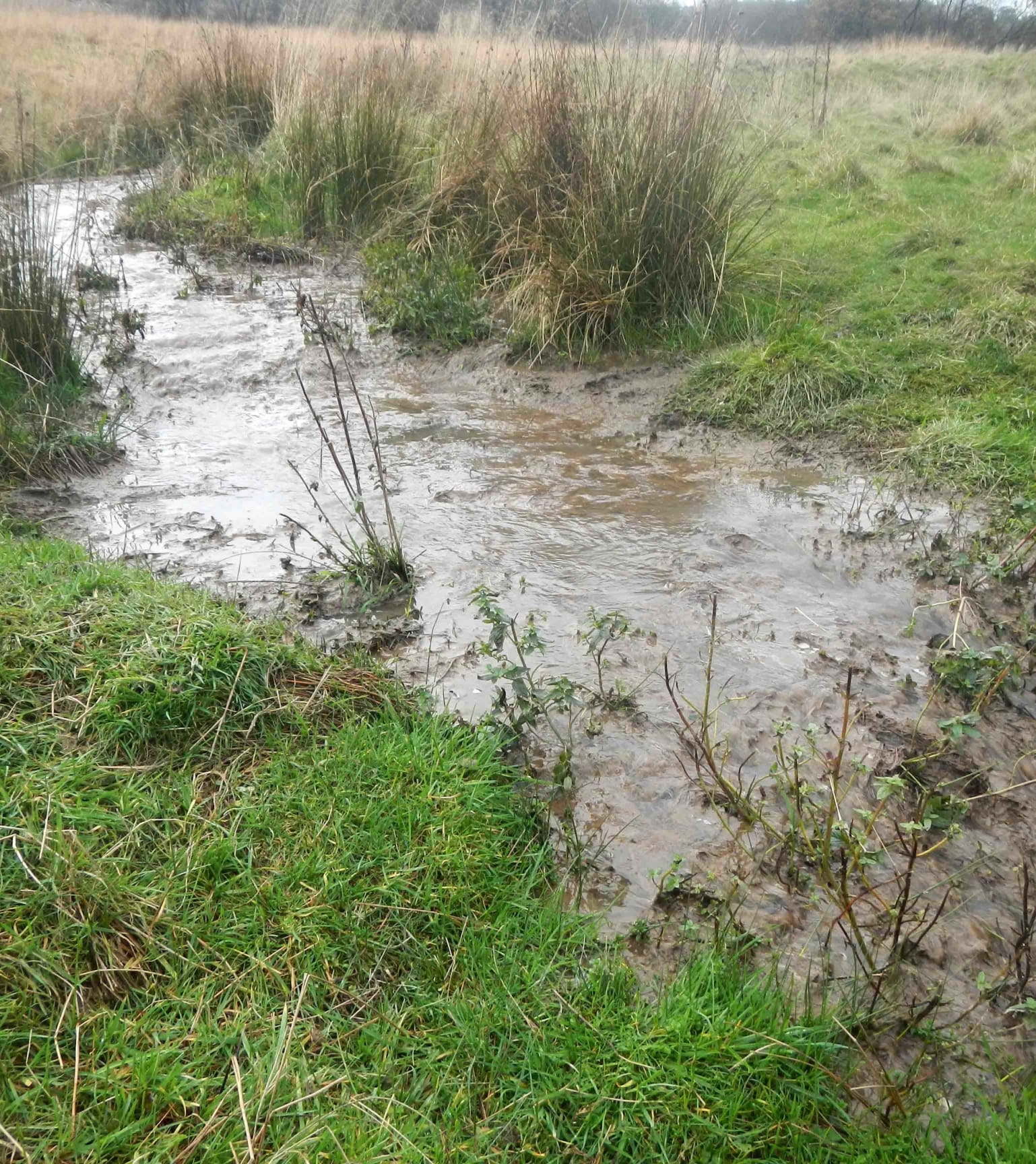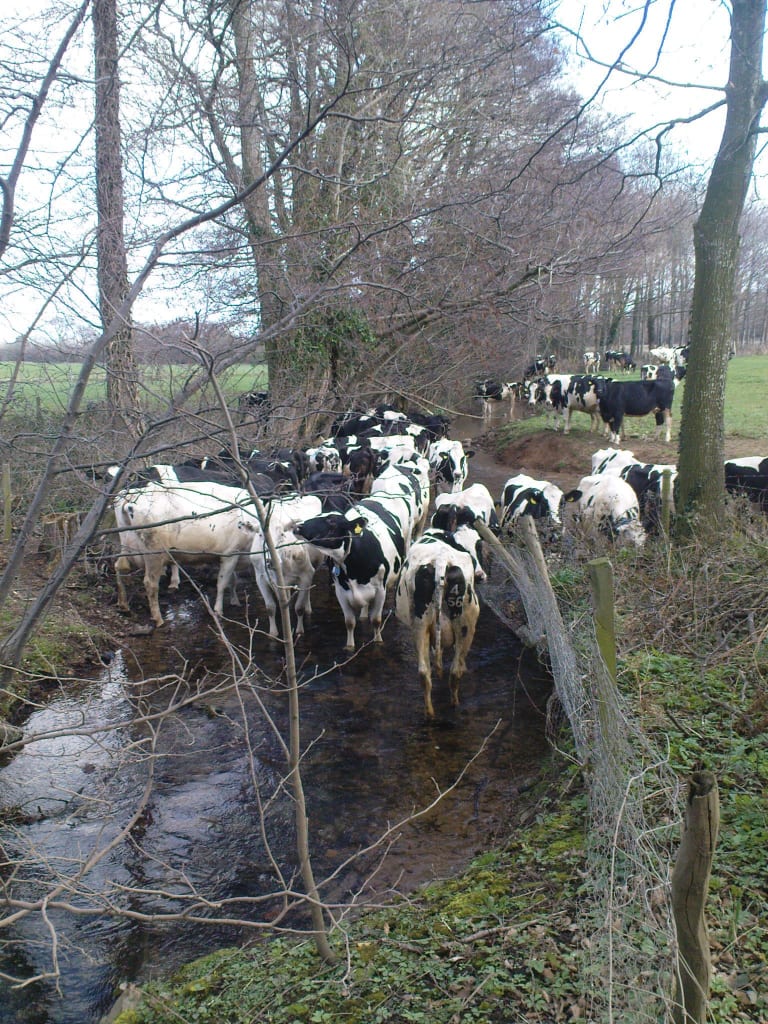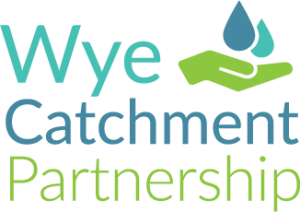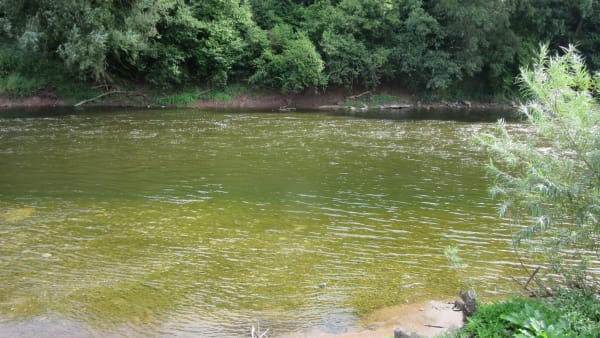Friday 7th June, 2019
Another severe algal bloom has occurred on the lower Wye in the past couple of weeks. This is now an annual event and can sometimes affect the river as far upstream as the Ithon confluence with the blooms worsening as the river progresses downstream. Visibility in the water can drop to less than 15cm on sunny days below Monmouth.
Of equal concern was the Usk also showing signs of algal bloom last weekend with water visibility dropping to around a metre. We hope that today’s rain will be enough to give both rivers the flush they need.
The effects of algal blooms
A river resembling pea or onion soup isn’t just bad news for anglers and for the aesthetics of the river valleys. Algal blooms have a significant ecological impact too, shading out important aquatic plants that provide habitat for fish and invertebrates. All plants (including algae) respire at night removing oxygen from the water. In combination with high water temperatures, this can mean that by dawn, oxygen levels in the river can reach low enough levels to kill fish.
 The cause
The cause
Such blooms are caused by a combination of sunlight, low flows and elevated levels of phosphate in the water. The Foundation can’t affect the weather but we are working to address both the other factors. A slow moving river allows algae to multiply many times more before it is washed out into the estuary.
In the case of the Wye, the issue has also been compounded by a change in where the bloom originates. Ten years ago it was from the confluence of the Lugg to the tide. The Wye downstream of Hereford was affected most but because it is less than 50 miles from there to the estuary, the algae did not have very long to multiply and thus the blooms were only severe in very low flows.
Over the past six years much of the Foundation’s farm work has concentrated on the Lugg catchment, the results of which are reflected in the river’s phosphate levels dropping by 31%. Almost half of the phosphate comes from sewage treatment works, so the reduction from farming has actually been closer to 60%. In addition to our farm work, our partners Welsh Water are planning large reductions in the amount of phosphate discharging from their works.
It has therefore been extremely frustrating to see the Wye’s algal blooms getting worse in the past few years. A significant number of farms in the upper catchment have diversified and added poultry enterprises to their businesses. This is likely to be an influencing factor on why phosphate levels in the Ithon at Llandrindod, are now higher than the Lugg.
The Llynfi, another upper Wye tributary is also adding a significant amount of phosphate. In combination with weak regulation of bad agricultural practices in Wales, all this is generating algal blooms in an area where they were unheard of a decade ago. Now starting 112 miles from the estuary, the algae have the chance to multiply many more times before reaching the lower river.
What is being done?
The good news is that the Foundation and our partners are making progress to correct the problem. Our three year Wye, Ithon, Severn, Ecosystems Project (WISE) which started in February and funded by Welsh Government, Tesco and Co-op, is reducing the amount of phosphate getting into the river by working with farmers, businesses, the agricultural supply chain and Welsh Water.
 Welsh Water will also reduce their input of phosphate by around 30% over the next 6 years through proposed investment at 11 sewage
Welsh Water will also reduce their input of phosphate by around 30% over the next 6 years through proposed investment at 11 sewage
works in the catchment. New technology will allow them to reduce phosphate levels from treatment works to 0.2mg per litre compared to the current 1.0mg/l. This will significantly benefit the lower Wye as the major treatment works are upstream at Leominster (Lugg) and Hereford. However, the reductions at the treatment works in Llandrindod Wells, Builth Wells and Rhayader will be integral in our combined efforts to clean up the upper river and control algal blooms in the Wye.
We also need agriculture to also reduce its phosphate input by 30-35% across the whole Wye and Usk catchments. We are on a trajectory to achieve this in England in the next few years but further work is needed in the Wales to ensure the rivers remain clear. Encouragingly, Welsh Government are proposing new tougher rules for agriculture to come into effect in January next year.
All the best from WUF.



